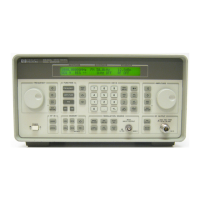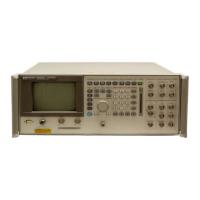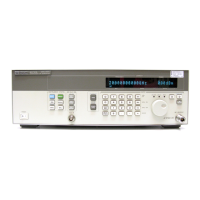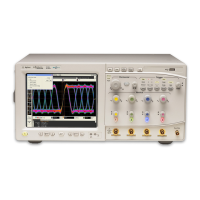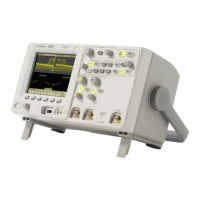1b-13
Operation Reference
Function
• TERMINATOR sets whether the re-synchronization pattern is output after the last message. The
collapse cycle will determine in which frame the re-synchronization pattern appears after the
INCR SET (START/STOP) key is pressed to stop or at the end of a burst sequence (refer to
“FLEX/FLEX-TD Signaling Examples”).
ON: Default setting. Outputs the re-synchronization pattern.
OFF: Does not output the re-synchronization pattern.
NOTE If TERMINATOR is set to OFF, the pager under test is not synchronized. Therefore, the
pager can not be synchronized with the future page until the re-synchronization
pattern is sent. To send the re-synchronization pattern, set TERMINATOR to ON in this
menu or select RESYNC in the format menu.
Entering the Pager Capcode (Address) The pager code menu looks like the following:
• PAGER CODE accepts alphanumeric characters up to 16 digits.
Use the numeric keys to enter the capcode. To select an alphabetical character, press
rad/dBµV
(SHIFT) before the numeric key associated with the desired alphabetic character. Terminate
your entry with the
MHz/dB(m) (ENTER) key.
A FLEX/FLEX-TD pager’s capcode contains address and protocol information. Entering the capcode
in the PAGER CODE data field automatically sets up the ADDRESS TYPE, ADDRESS1, and
ADDRESS2 in the address menu, and the FRAME, PHASE, and COLLAPSE CYCLE in the
protocol menu as well.
The following table shows an example of the conversion from capcodes to the parameters. Note that
the values of COLLAPSE CYCLE and FRAME are changed.
Capcode ADDRESS
TYPE
ADDRESS1 ADDRESS2 FRAME PHASE COLLAPSE
CYCLE
A0012477 SHORT 0045245 None 011 D 4
2A0012477 SHORT 0045245 None 011 D 2
1272A0012477 SHORT 0045245 None 127 D 2
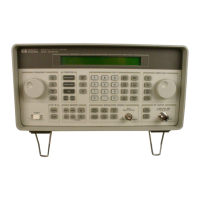
